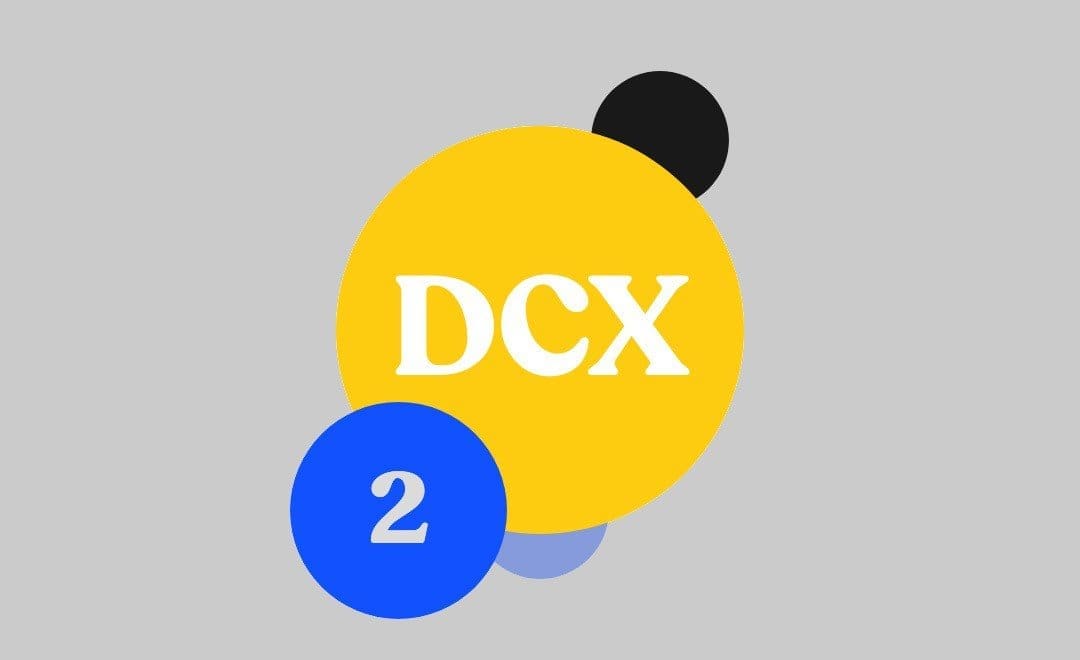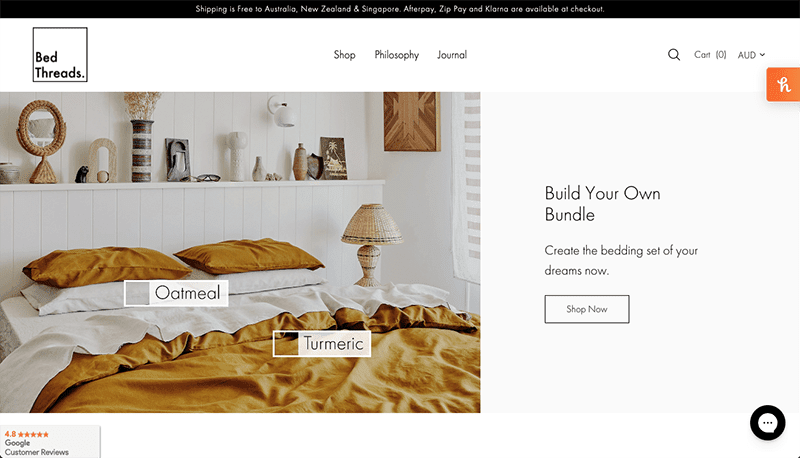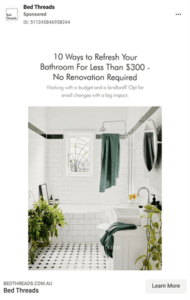
- DCX, Digital Customer Experience, DCX Statistics, Case Study, Bed Threads
Recent articles
our mailing list
Week 2: The Digital Customer Experience – Our Observations

Week 2: Our Observations
Welcome back to week 2 of the Sydney Digital Marketing 12 week series on the Digital Customer Experience (DCX).
Previously known as the Customer Experience (CX), DCX takes on a new form, especially within the digital marketing field.
Digital Customer Experience is, as explained in our [week 1 article] and introduction to the topic, a way of mapping the customer journey and all of their interactions with a brand or business, in order to create the best experience for them.
Think CRM, Social Media, Advertising and all that other jazz…
It’s just obvious that people = love a great experience! And on the other end, put simply, people = hate an experience that makes them feel negatively. We feel marketing should be invisible, something that aids in their overall life experience, and either adds to it, makes it easier, or offers something in return.
When a company is able to put their customer at the forefront of everything they do, this is a way of building trust and improving brand loyalty and customer satisfaction, meaning ultimately, sales and business revenue.
Business Stats
We can speak the language, but it’s the stats that talk. Here are 5 focus statistics when considering the priority for your business in delving into a more DCX way of thinking.
1. 60% of customers say they trust the reviews that come from friends, family, and other customers.
(Source: Hubspot)
Think of your customers as your very own influencers! We spoke in week 1 of the importance of nurturing your audience if you want to give them a great customer experience.
The way this will impact you is, the better the experience, the more likely for both repeat customers, as well as referrals.
2. A positive customer experience encounter can increase customer spending by up to 140%.
(Source: Deloitte)
When thinking about a physical in-store shopping experience, an amazing salesperson is more likely to keep you in the store talking, recommending items and selling the entire experience of the store.
Your online store should embody this salesperson kind of mentality and recommend the right products, at the right time.
A great website will draw your customer through it, the longer on your site, the more time to explore products, to see reviews, recognisable brands, and to interact with who your brand is, creating familiarity.
3. 86% of customers say that they are ready to pay more if it means getting a better customer experience.
(Source: Super Office)
I’m sure you have one or two brands or businesses that you can’t seem to let go of. One that still, after all this time, does what you need, when you need it, without fuss.
Whether it be your monthly wine subscription or favourite clothing store, you may not even be aware of how much more inclined you are to spend money with them, all because they’ve been there for so long front-of-mind that you don’t even question buying there, even if it costs more.
4. Businesses that prioritize customer experience have a revenue increase of 4-8% higher than their competitor.
(Source: Forbes)
Customer experience is one thing, taking this digitally means retargeting or remarketing, and marketing to the right people at the right time.
It’s a skill and a talent that can take lots of trial and error, but getting in early to focus on this now means you’ll be ahead of the crowd (and your competitors).
5. 89% of consumers have moved to a competitor following a poor customer experience with a brand.
(Source: Lumoa)
The power of being a consumer in this day and age is the ability to have a choice. The decline of a human’s attention span is something that businesses have to be aware of in the coming years.
If someone doesn’t like the experience they are receiving, then it’s too easy to say goodbye and find someone who will give them what they want.
Adding to this, on average it takes only 2 bad experiences with a brand for someone to turn to a competitor, with only 19.3% of customers reporting that they will tell the brand directly about their bad experience.
This means you will have little to no obvious insight about what you’re doing that’s not providing the best experience, and in turn, it’s basically up to you to figure out why. More on identifying room for improvement by reviewing your customer journey mapping later.
Our Example; Bed Threads
The team discussed in our weekly team call this week about a brand that we felt exemplified a user experience to aspire for. With a number of individuals in the team vouching for this brand, we landed on Bed Threads.
Bed Threads is an Australian B2C E-Commerce business that sells 100% flaxseed linen bedding and now loungewear/sleepwear, homewares, art and more.

Launching in 2017 with the option of just one full bedding set, (two pillowcases, a duvet cover and a fitted sheet), they managed to sell out in just 3 weeks. 5 years later, they are boasting their incredible range of products which stays absolutely high in demand.
With just under 300k followers on Instagram and 40k+ likes on Facebook to date, their brand oozes aesthetic and success, being everything a brand needs to be in 2021… ethical, sustainable, and beautiful.
What Bed Threads is to us, is a brand that has listened to their audience and customers, adding products like a build your own bed set allowing you to customise your bed set with any combination of their 22 colours and patterns.
Their marketing strategy and ability to curate content that inspires, educates and sells is something to follow.


When you see content from this brand, do you feel that they’re desperate to sell? Do you feel like you’re not being spoken to directly, almost like a 1 to 1? Do you trust this brand?
Of course, for any B2B and B2C company, their primary goal is to sell and increase revenue. We’re stuck in a consumer environment now where buying is something we all do, the next step is being aware of who we are buying from, what they stand for and why they do it.
3 Quick Tips For Businesses
Feeling inspired? Feeling like there’s room for improvement for your own digital customers’ journey? We want to offer some of our own knowledge and experience in some quick tips for businesses in moving their thinking and existence towards Digital Customer Experience and user-centricity.
We mentioned that there are 3 (or 4) main focuses when it comes to DCX;
- 1. Website
- 2. CRM
- 3. Marketing
- 4. Data, but more to come on that in Week 9.
Your Website
OUR TIP: Rather than reducing clicks, focus on making each click relevant and purposeful.
We’ve heard of the ‘Three-Click Rule’ coined in 2001 by web designer Jeffrey Zeldman to push people to reduce the amount of clicks on a site to a measly 3. But a later study published in User Interface Engineering (or read the article by UIE) found that users aren’t more likely to resign to failure after three clicks versus a higher number such as 12 clicks. “Hardly anybody gave up after three clicks,” said lead, Porter.
Hindering yourself to 3 clicks means cramming all the information people need to know, and the information you want the customer to know, as well as potential upselling and more.
We say scratch the three-click rule and focus on making clicks relevant and purposeful. When we design and develop a new website, we go through a process of mapping out the interactions on the site, what needs to be shown where, then we use both our human-thinking and audience research to create the journeys that will foster a meaningful experience.
Your CRM
Do you know where your contacts came from? Did they come from socials or Google? Which ad did they click? Which keyword or term did they search? What pages on your site did they click?
Drawing a blank? This begs the question, do you know your audience? Like really, really know your audience? And on top of that, do you know how your audience likes to be marketed to?
OUR TIP: Find a CRM Platform that integrates seamlessly not only just with your website but with your needs, goals, other platforms, and team!
At Sydney Digital, we use a range of different CRM platforms like Hubspot, Active Campaign, Campaign Monitor & more, so that we can set up to best practice to get the absolute most out of your customer habits.
Tagging and segmenting your database into lists based on their interests, behaviour and location is one thing. What we focus on is understanding each individual audience so that these factors are at the forefront of our mind when curating content to draw them down the funnel.
For example, a customer who engaged with your website multiple times before signing up or purchasing is bound to be different from someone who purchased straight from an ad. Everyone has different buying habits, therefore, marketing needs to be different.
Some questions we ask our clients before deciding on the best CRM platform for them;
- 1. How many contacts do they currently have? This is to understand the price.
- 2. What are they trying to achieve? To understand goals.
- 3. What features are MUST-haves? To determine features.
- 4. Who will be using the platform? To see how easy or complex it needs to be.
- 5. What other platforms do they use? To ensure seamless integrations.
- 6. What metrics will they track in their CRM? To predict reporting.
- 7. Will they outgrow this CRM at any point? To promise scalability.
Your Marketing
Success truly means nothing if you don’t know where this success is coming from. If you’re marketing on various platforms, do you know how many leads or opportunities you have created on each of these platforms? What is the quality of those leads? What keywords are providing the best value for spend?
Knowing the questions above can help you better evaluate which platform your ads are on providing the best ROI.
You can question yourself generally in the beginning, thinking, where is my audience? You can decide Facebook & Instagram for younger, LinkedIn for Corporate, Google for all, but if you’ve dabbled in marketing, you know that sometimes success comes from somewhere you least expect it.
Being capable of drawing conclusions from your marketing efforts, based on results, is going to be much better than assuming that a platform is going to work for you perfectly the first time round, or even thinking that because you’ve had success on one platform, that it can’t be replicated somewhere else.
We are open with our clients about the possibilities of testing and trialling various advertising platforms so we can open doors, and close other ones for them to know in the future.
OUR TIP: Be open to new ideas, take a breath and understand that success comes with time, hard work and persistence.
We can’t stress this enough… every! business! is! different!
We find success with some clients in a particular industry, we often find doesn’t work in other cases. We know that marketing and finding the right audience comes from learning, studying, adapting, changing, optimising. But most importantly, this comes with understanding when something is not working and knowing when to move on and try something else.
The best partnerships we have with clients is when they understand that though we are the professionals, the world of digital takes twists and turns that we can’t always predict. The reason why we succeed is because we know how to draw conclusions from data and create a new avenue towards success.
Marketers need to be agile, that’s just simply, the world of digital marketing.
We hope you found some helpful tips and information in Week 2 of our series on The Digital Customer Experience.
Thanks for your time today, and see you next week on LinkedIn & here at the Sydney Digital Marketing Blog.







